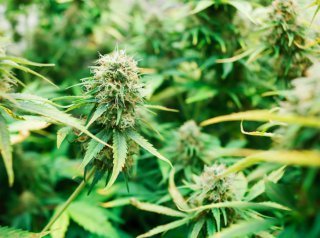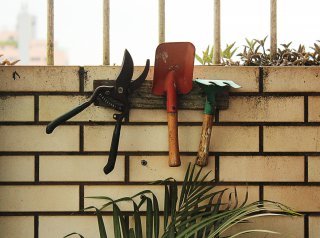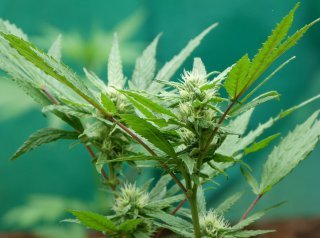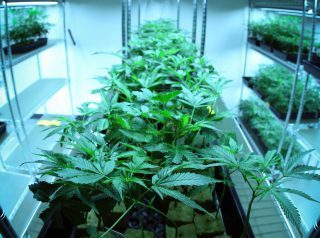Mistakes are unavoidable when you are a complete beginner when it comes to growing marijuana. They can be discouraging too especially when problems continue to rise in your garden, leading some people to give up on cultivating their own weed altogether. But the experience is rewarding and occasional blunders should not hinder you.
Here are some common blunders that beginners face when cultivating weed for the first time.
Page Content
1. Starting With Bad Seeds
Cultivating weed is an exciting experience for many novice growers. In the eager rush to get start growing, however, some make the fatal mistake of choosing a bad seed. The seed may have either been of poor quality, crumbled at the slightest pressure, had a low germination rate, or was not mature enough to grow into a plant.

There are also enthusiasts who get their seeds from the weed they purchased. While getting free seeds is fun, they are likely duds, males or hermaphrodites that prove to be useless when producing flowers. Bagseeds also signify that a few of the female plants have been pollinated by a male, reducing its potency in favor of creating seeds.
Of course, plants could still flourish with proper care, through adequate nutrition, watering, and lighting. But starting with good seeds is definitely a game changer when it comes to achieving a successful grow.
How To Avoid
The first step to ensuring you have a good batch of seeds is buying them from a reputable source. Dispensaries stock product from top seed banks which you can get on your next visit. You can also directly order on their website.
A great thing about buying from a seed bank is that their products tend to have labels which helps growers make an informed choice. Compared to bagseeds, or seeds you find with your weed, they are less likely to turn out male or hermaphrodite. You should also avoid old or young seeds since their germination rates are usually low.
You can tell a seed is healthy if it has a darker color, ranging from deep brown to grey to black with a slight sheen to it with some exhibiting tiger stripes. Seeds with a lighter hue with a dull-looking surface are either old or poor-quality seeds that are no longer be viable or have low germination rates. If it exhibits a green or white hue then, most likely, it is a young seed that cannot be germinated yet.
They have to be firm to the touch too. If you give it a light squeeze, it should not bend, crack, or crumble. Seeds that break under a small of applied pressure are not usable. Make sure to always check for these traits before every purchase.
If you already have at hand, the most foolproof way of steering clear from bad seeds is testing them. You can check if the seed is still viable through a simple test right before germination.
Fill a glass with water then drop the seeds. Remember to give these little plant pods at least an hour or two. These provide enough time for some hard-shelled seeds to absorb enough water for them to sink. With that said, if it remains on the surface, then it is probably a seed of poorer quality. Seeds that sink to the bottom, on the other hand, are more likely to be healthy and viable.
2. Overwatering
Overwatering does not occur when growers give plants too much water once. On the contrary, it is the result of constant or frequent watering. Most likely, the cause is rooted in novices worrying whether their plants are receiving enough water.

It is not uncommon to miss the signs due to how healthy the plant looks. Its leaves are plump, full of moisture, and exhibit a deep green hue. In actuality, however, the cannabis is having trouble sweating out the extra water.
Thus, it is imperative for growers to determine whether a plant has been overwatered or not before root rot sets. Usually, they present the following symptoms:
- Drooping, yellowing leaves
- Leaves, not just tips, curling inward
- Mold and mildew
- Slowed or stopped plant growth
- Pest infestations
Swamping the medium with too much water makes it difficult for roots to breathe. It is suffocating, leading to a myriad of side effects that slow its growth or create the conditions for diseases to co-morbid. It will eventually escalate to root rot and end in its untimely demise.
How To Avoid
Overwatering is an easy problem to solve. Simply stop watering until the top portion of the soil dries. Do it as soon as you notice the leaves start drooping for longer than a few hours.
Another trick is to raise the temperature and improve airflow as well as drainage. Use a pencil to gently poke holes into the pot for extra aeration, so the roots receive much needed oxygen while draining what is waterlogging the plant. This also helps it evaporate faster.
To check if it has dried, dip a stick into the soil for a few minutes then take it out. If it is wet, then consider letting it dry a little more. Once it has, you can return to watering your plants. A good indication that is not waterlogged is if 20% of the water runs off.
Take time to monitor the environment. If the growing area is humid, then the soil could stay wet for longer periods of time but plants situated near a heater or air conditioner tend to be drier. Plants under bright lights are quicker to dry compared to those in lower light. Not only that but plants sowed in large planters are slower to dry than plants in smaller-sized planters.
Although the goal is to water plants every two to three days, it is important to adjust the watering schedule to suit the plant’s needs. If it takes longer to dry, then watering needs to be far in between. Otherwise, watering should be done more often.
3. Not Managing pH
Beginners come across a lot of technical terms when learning how to grow for the first time. Part of these is pH, or the acidity or alkalinity of a water-soluble substance, and it is the one factor that should never be overlooked in spite of how daunting it may seem. pH determines what nutrients and carbohydrates your cannabis plants absorb or feed off on for growth.

Many problems arise when pH levels are unmanaged. The plant exhibits nutrient deficiency problems that leave it sick and struggling to get better. Yields suffer too, new growth is smaller and buds tend to be of low quality. In cases where it is really off the mark, the cannabis plant does die regardless of its resilience.
When off pH levels are not addressed, growers could continue to deal with the same problems over and over again. Thankfully, it is easy to determine and manage.
How To Avoid
Marijuana thrives best in soil with a slightly acidic 6.0 to 7.0 pH. In this range, it easily absorbs all the nutrients it desires to optimize its growth. It tends to fluctuate so it would be a good idea to check on your medium’s pH levels periodically. In this way, you can address problems before symptoms start to show.
You can do this by measuring the water runoff with pH strips or a digital meter. After watering your cannabis plant, a bit of water should run off from the bottom of the pot. Take a sample then dip your strip or digital meter into it.
The results should not take a while. Growers using pH strips will see the litmus paper gradually change color. Once it has, measure it against the pH color index for its corresponding value or range. Digital meters usually give growers more accurate results which makes it easier for growers to address any problems caused by off pH.
Once you have obtained your result, determine whether you need to lower your pH or raise it. There are many ways to optimize soil, but perhaps my favorite and the most efficient way is a bottle of pH adjuster. It is usually sold as a bundle, one pH Up and one pH Down.
To use, first add the needed nutrients or supplements to the water then gently shake or stir it. Test the pH level of the nutrient solution then optimize it with the pH adjuster. Add pH Up if the pH is too low and pH Down if the solution’s pH is too high. Mix then retest the pH of the solution to ensure that it has a slightly acidic pH of 6.0 to 7.0 recommended for soil mediums.
Water your plants with the nutrient solution mixed with either pH Up or Down then test the runoff water immediately. Repeat until the water runoff is at the optimum pH level.
4. Using Too Much Nutrients
Nutrients are essential for a plant’s development. Mineral fertilizers help plants grow strong, while organic nutrients keep the soil healthy. Chemical fertilizers, on the other hand, are refined nutrients that are instantly absorbed by plants.

When a plant is overfed, it may begin to show signs of nutrient or nute burn. The tips of the leaves start taking on a brown, bronze, or yellow color. It will slowly twist and turn crisp if growers continue to feed it with high levels of bottled chemical or mineral nutrients.
Other signs to watch out are:
- Deep green leaves
- Leaf clawing or curling at the tips
- Yellowing sugar leaves and calyxes
- A yellow halo at the center of the leaf that separates healthy tissue
- Leaf drop
- Black brown or rotting roots
- Crust of fertilizer on the soil surface
- Slow to no growth
Nutrient burn damages the roots, hampering its ability to absorb nutrients and making it rot, and the leaves eventually die before dropping off. If it is not resolved, growers may either end up with low-quality buds with reduced weight and a weird taste or no yield at all.
How To Avoid
The first thing to do is do a thorough inspection of the plant.
Nutrient burn can happen at any time and in varying degrees, but a severe case is especially harmful during the flowering phase. All its energy is diverted into creating buds instead of growing more leaves, making it extremely difficult to bounce back into health. As such, early detection is necessary.
Inspect the plant as soon as possible. Once you notice symptoms of nutrient burn in your plants, the next thing to do is to immediately stop feeding them. Flush out the excess nutrients by giving the plant pH-balanced water.
Alternatively, you could buy nutrients in a bottle. Try to use nutrients that work well with tomatoes since it usually means that it will be beneficial for your cannabis plant. Check the nutrients that have been fed to the plant over the past few days then remake the mix based on its current stage.
Beginners to hydroponics can address nutrient burn by reducing nutrients from the water. A TDS meter can provide an accurate reading of the nutrient levels. In this way, growers can determine what nutrients to add to the next feeding. Flushing out the excess nutrients with plain pH-balanced water is also an option.
The plant should recover after all the nutrients have been flushed out. Before returning to its feeding schedule, reduce the recommended nutrient levels by 25% to 50% to prevent overfeeding. Finally, trim the leaves affected by the nutrient burn to prevent it from affecting the overall health of the plant.
5. Not Enough Light
Light plays a critical role in photosynthesis. It supplies plants with food and energy to grow. Not only that, it is directly correlated to how fast a cannabis plant finishes as well as its total yield at the end of the flowering stage.

In the absence of lack of light, a plant’s growth suffers. It slows down or halts entirely, a problem that many indoor growers face. The stunted development is clear in its outward appearance – the plant loses its vibrant color, new stems elongate, while leaves begin to wilt and fall and the ones that replace them become smaller.
Plants may also exhibit these symptoms when the lights are not in the right spectrum. Incandescent bulbs, which are commonly used by first-time growers, only produce red light. It also tends to be hotter, creating a dry environment and potentially burning off the tips. Regular fluorescent lights, on the other hand, induce a blue light that cannot sustain the cannabis during the vegetative and flowering period.
How To Avoid
For some people, the solution is as simple as moving the plant to a sunnier spot or by the windowsill. Growers with more than a few indoor plants can turn to add extra artificial lights. But before going out and buying the strongest light you can find, consider the following:
- Light Quality. This refers to the wavelength of the light. Plants require an even amount of blue and red light to help it grow.
- Light Intensity. Intensity is the strength or brightness when it reaches the plant. To put it into perspective, the intensity drops when the plant is further away.
- Light Duration. The duration of light is the number of hours a plant spends in the light or the dark.
If the problem is with quality, try looking for a two-bulb fixture that utilizes both the red and blue light produced by incandescent and fluorescent bulbs respectively. There are also a full-spectrum fluorescent lights available. These have been calibrated to mimic 94% of sunlight’s light spectrum and are better suited for indoor growing.
Growers with a large area should consider buying a metal halide (MH) or a high-pressure sodium (HPS) lamp. They are quite powerful, emitting a strong white glow with the optimum spectrum for plant growth. It is best suited for bigger indoor or industrial farms.
LED lights are relatively new to the industry but are fast becoming a popular choice. Compared to MH or HPS, there is no danger of overheating. It provides enough red and blue light for plants to flourish without the white glow. This makes it great for standard home grows.
The next step is to determine how much light you need. Calculate the square foot of the grow space (length x width) then multiply it with the minimum requirement needed for the light you are planning to use.
The amount of light needed per square foot of grow space is dependent on the type of light. For LED lights, the minimum is 50 watts. Incandescent lights, 300 watts; Fluorescent lights, around 140 to 150 watts; MH lamps around 100 to 140 watts; and, finally, HPS lights, around 100 to 150 watts.
As for duration, ensure that the plants are receiving the right amount of ‘day’ based on their current phase. The vegetative phase usually requires lights to be turned on for at least 18 hours. During the flowering phase, the day schedule is reduced to 12 hours of day.
There are people who try to shorten the light duration by incorporating a more powerful light, but this cannot supplant the day schedule. This part is non-negotiable in addressing light problems. Always supply cannabis plants with the hours it requires.
6. Lax Inspections And An Unclean Environment
Cannabis plants are resilient, but that does not mean they are not prone to pest and disease. At any time, it could be ravaged by mold, mildew, mites, thunder bugs, fungus, and root or leaf rot among others. Thorough inspections could prevent this from happening or worsening.
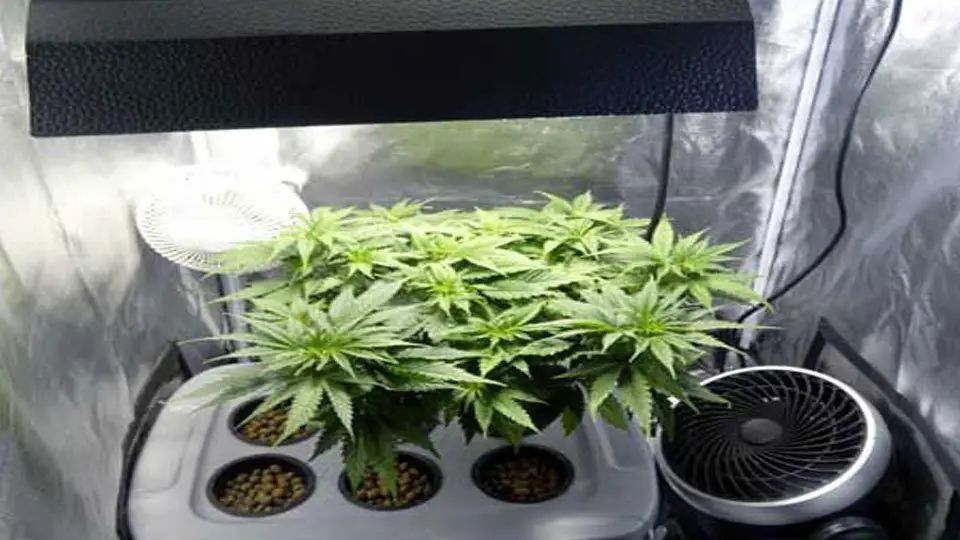
A big mistake among first-time growers is noticing only after serious damage has been afflicted. Lax inspections lead to the spread of disease and cross contamination. Another factor that could impact plant health is an unclean environment. It puts the cannabis plants at risk of pests and infection that could lead to impede its life.
How To Avoid
The ideal way to counter to this problem is to tighten inspections and adapt better cleaning practices. Start by doing a rigorous examination for all of your plants. Probe its health, assess the branches and stalks, turn over its leaves, examine the soil and its roots for anything that may be out of place.
The same should be done for plants that are being introduced to the garden for the first time. Place them in a quarantine that is far from the growing area and look for signs of disease or pests. Unhealthy-looking or sick plants should remain in isolated until they get better or culled if the situation calls for it. Infested cannabis, on the other hand, should be removed entirely.
Other precautionary measures such as washing one’s hands, wearing gloves, placing beneficial insects or fungi, always using new media, and sanitizing equipment like scissors will further reduce the chances of cross contamination. If tending to different strains or batches, make sure to use different gloves.
7. Harvesting Too Early
When the buds finally take form, it can be harder to resist plucking them. But it must be done. Timing is everything when it comes to harvesting. And here’s why:

- If you harvest too early, the buds will not be as strong.
- The flavors will either taste bland or bad.
- Buds that have been harvested too early have more unwanted reactions such as headaches and racing thoughts.
- Its effects will not be as potent.
- Yields are relatively smaller, reducing its overall weight.
How To Avoid
One of the best ways to avoid this common mistake is to check the trichomes. It is also the most precise. These trichomes, which look like glandular stalks up close, change over time from clear to cloudy then amber.
The trick is to inspect them properly. Instead of giving them a glance, try using a magnifier or a jeweler’s loupe to look at the trichomes. Upon close inspection, you will notice that trichomes actually look like tiny mushrooms. The general rule is to wait until at least 40% have darkened or turned cloudy.
If it is clear or ‘white’ and sticking out, then it is not the time to harvest the buds at all. They have not fully developed the potential of their cannabinoid profile yet, leading to lower potency among others.
The type of high you want also matters. Generally, half clear and half cloudy trichomes deliver an energetic high that many would regard as speedy. Many growers harvest when at least 50% to 70% of trichomes have darkened or turned cloudy because it provides the right balance of euphoria and bodily relief. For a heavier, more relaxing physical buzz that reduces anxiety, try plucking the flowers when 70% to 90% of the trichomes have darkened.
Each Mistake Is A Chance To Become Better
Mistakes are discouraging, that is something I cannot deny. But, it is always how we react that makes the biggest difference, so keep an open mind and try to stay calm when your plants start to show symptoms of an underlying problem. This is how we learn to improve our skills until problems no longer faze us and we become better growers.

